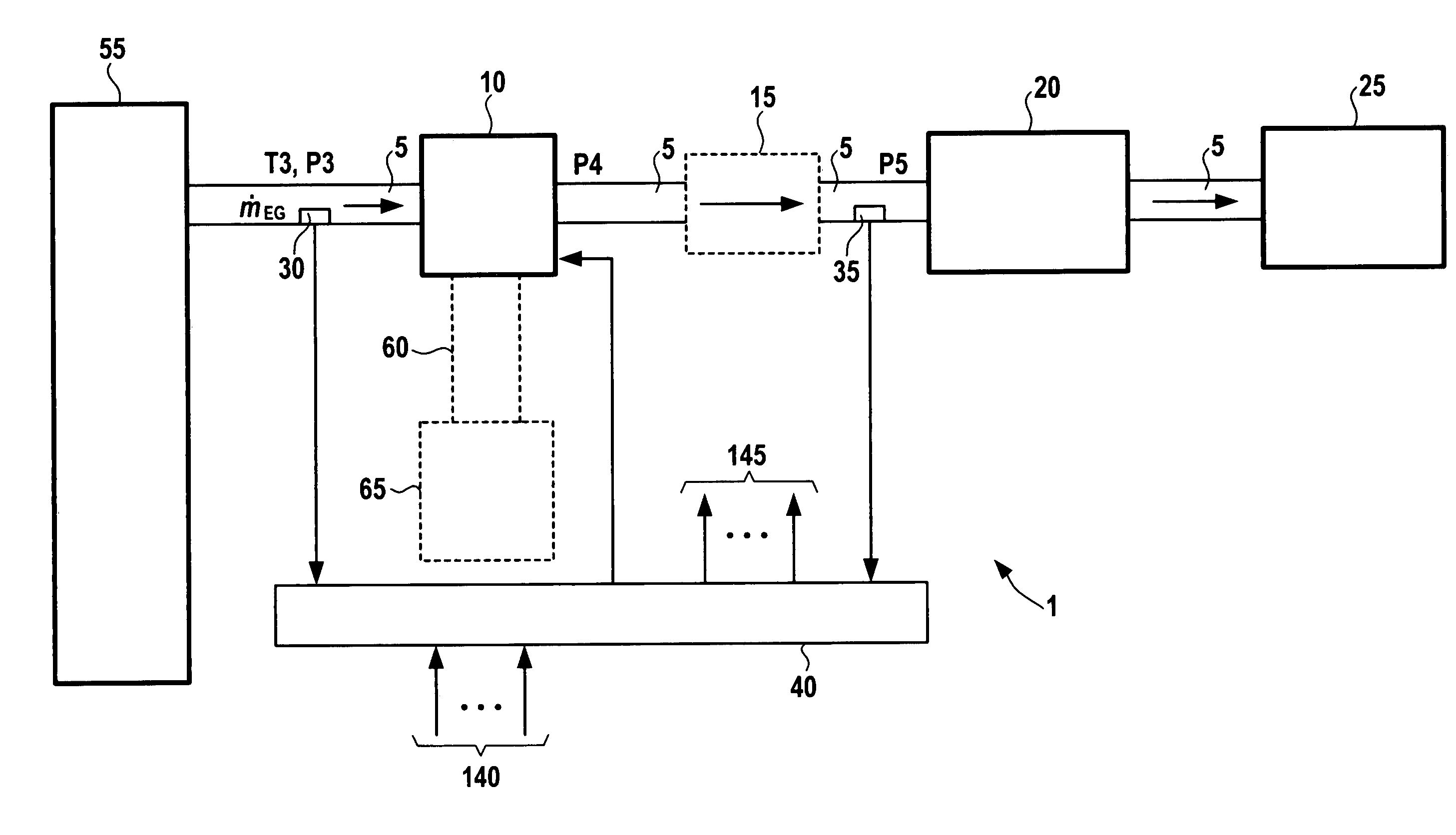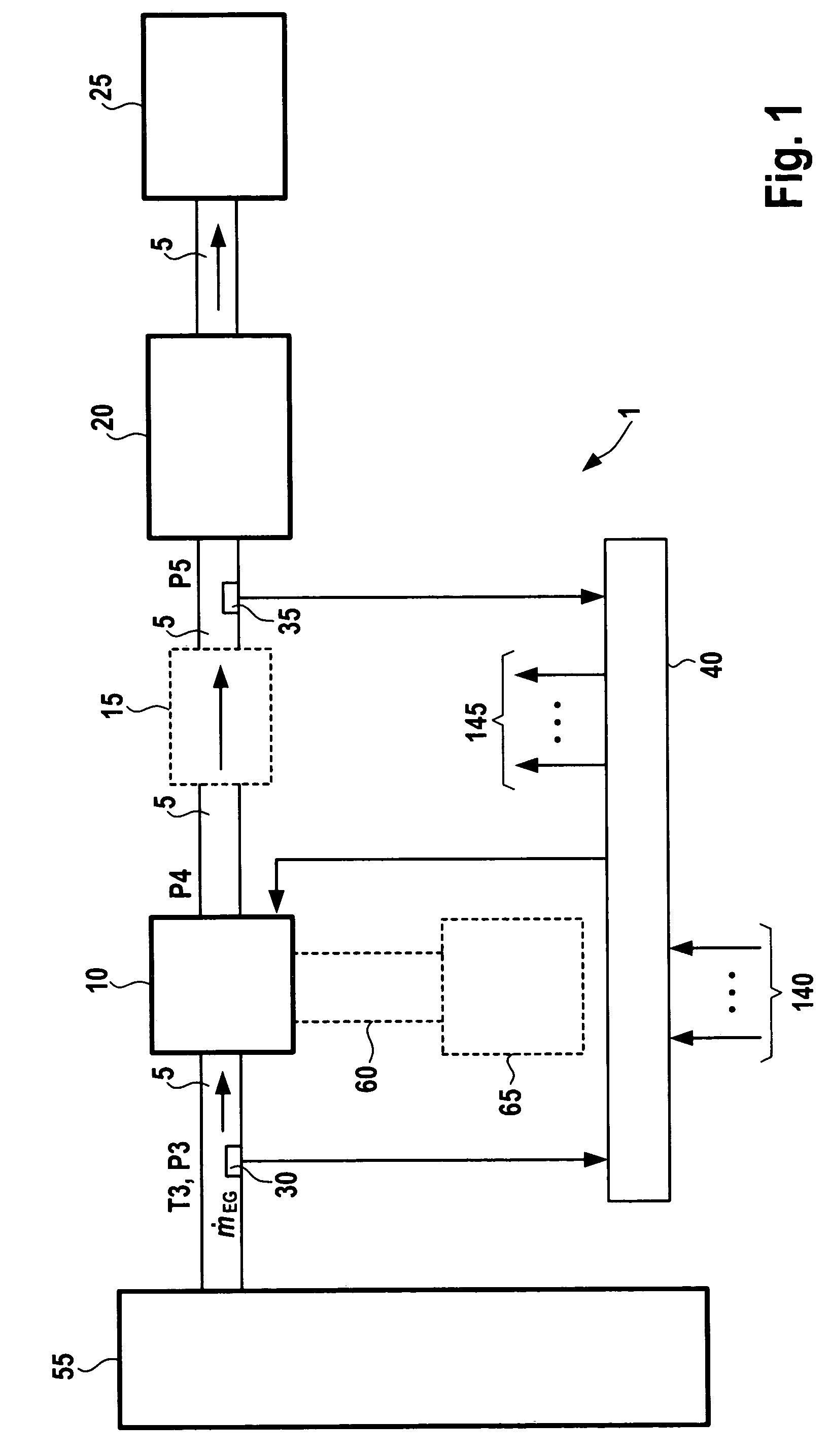Method and device for operating a combustion engine
a technology of combustion engine and combustion chamber, which is applied in the direction of electrical control, exhaust treatment electric control, instruments, etc., can solve the problems of uncomplicated plausibility check of two pressure sensors, and achieve the effect of low engine speed
- Summary
- Abstract
- Description
- Claims
- Application Information
AI Technical Summary
Benefits of technology
Problems solved by technology
Method used
Image
Examples
Embodiment Construction
[0016]In FIG. 1, a combustion engine is generally designated by reference numeral 1. In this example, combustion engine 1 is an internal combustion engine such as spark-ignition engine or diesel engine for powering a vehicle. FIG. 1 also shows an exhaust branch 5 of combustion engine 1. This exhaust branch 5 extends from at least one cylinder 55 to a muffler 25. The combustion of air and fuel in the at least one cylinder 55 produces exhaust gas which is expelled from the at least one cylinder 55 into exhaust branch 5 via at least one discharge valve. The resulting exhaust-mass flow is denoted by {dot over (m)}EG in FIG. 1. The flow direction of the exhaust gas in exhaust branch 5 is indicated by arrows in FIG. 1. Arranged in exhaust branch 5, downstream from the at least one cylinder 55, is a first pressure sensor 30, which measures a first pressure p3 of the exhaust gas at this point of exhaust branch 5 and forwards the measuring result to an engine control 40. Arranged downstream ...
PUM
 Login to View More
Login to View More Abstract
Description
Claims
Application Information
 Login to View More
Login to View More - R&D
- Intellectual Property
- Life Sciences
- Materials
- Tech Scout
- Unparalleled Data Quality
- Higher Quality Content
- 60% Fewer Hallucinations
Browse by: Latest US Patents, China's latest patents, Technical Efficacy Thesaurus, Application Domain, Technology Topic, Popular Technical Reports.
© 2025 PatSnap. All rights reserved.Legal|Privacy policy|Modern Slavery Act Transparency Statement|Sitemap|About US| Contact US: help@patsnap.com



